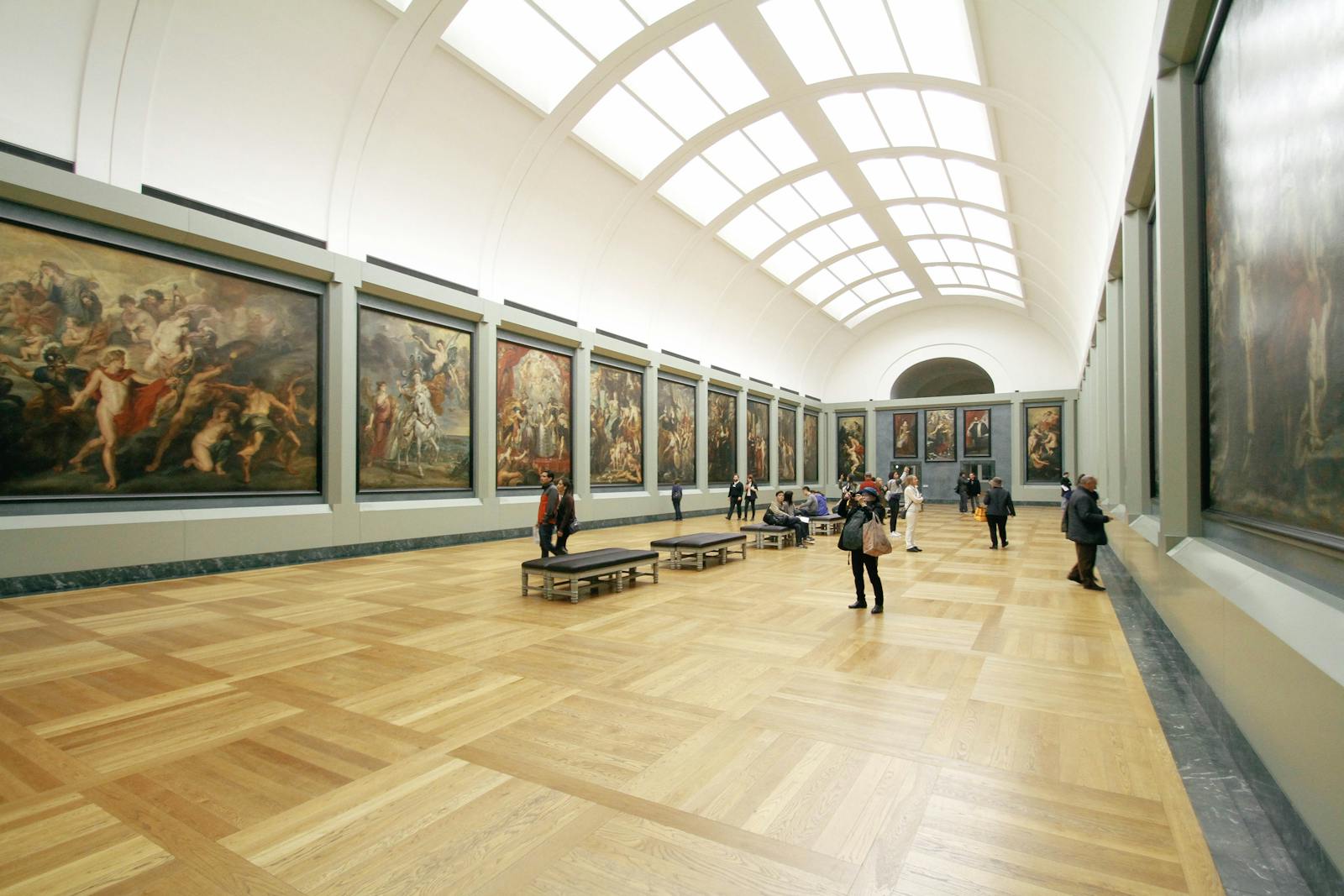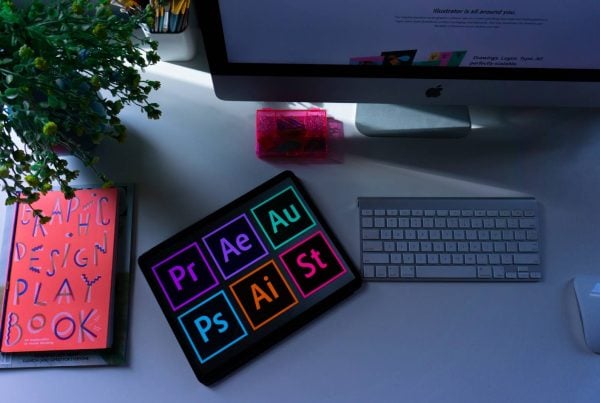Fine art is more than just painting or sculpture hanging in galleries. It represents original visual expression created mainly for its beauty, meaning, and emotional depth rather than practical function. Fine art aims to inspire, challenge, or move us, and it comes in many forms, including painting, drawing, and sculpture. We value these works not just for how they look but for the ideas and feelings they share.
Throughout history, people have created fine art to express themselves and record their world. Today, artists explore new mediums like photography and mixed media, pushing the boundaries of what fine art can be. Galleries and museums showcase these creations and connect audiences with the artists behind them, as noted in the Wikipedia article on fine art.
Table of Contents
Key Takeaways
- Fine art is created for beauty, meaning, and emotional impact.
- Many different mediums and styles are included in fine art.
- Exhibitions help connect people with fine art and its creators.
Definition and Characteristics of Fine Art
Fine art stands out for its focus on aesthetics, expression, and meaning rather than practical use. It encourages us to look deeper, think creatively, and reflect on human emotions and experiences through various methods and mediums.
Core Principles of Fine Art
Artists create fine art to be appreciated for its beauty and emotional or intellectual depth. Unlike decorative or commercial works, fine art aims for expression and impact, not function. This category includes painting, sculpture, drawing, printmaking, and sometimes photography and digital media.
We judge fine art by the artist’s technique, how well they communicate meaning, and the overall visual and emotional effect. The choice of colours, lines, form, and artistic medium shapes unique styles and approaches. Fine art often pushes boundaries and invites us to see the world differently, making it a key part of cultural conversation.
Fine Art Versus Applied Art
The main difference between fine art and applied art is their purpose. Fine art exists mainly for aesthetic value and intellectual or emotional engagement. It does not aim to be useful or practical but to move or challenge us.
Applied art, such as design, fashion, or decorative objects, mixes function with artistic elements. It serves a specific use in daily life, like furniture, ceramics, or graphic design. While applied art can be beautiful and creative, we judge it by both its appearance and how well it works.
We assess fine art for craftsmanship, originality, and meaning, while applied art is judged by its function and visual qualities. This distinction helps us understand the unique position of fine art in society. For more details, visit this page explaining fine art vs applied art.
Conceptual Engagement in Fine Art
Conceptual engagement defines many fine artworks. Artists use their chosen medium to express ideas, beliefs, or feelings—not just to create a visual object. This might involve abstract forms, stories, or messages that encourage us to think.
Modern and contemporary pieces often focus more on the concept than the finished object. This approach invites viewers to interpret meaning, question assumptions, or explore broader themes. Fine art becomes a conversation between the artist and the audience, where intellectual curiosity and emotional response matter.
Fine art encourages reflection and questioning, shaping cultural and social understanding. Learn more about how fine art evokes emotion and ideas.
Historical Context and Evolution
Fine art has developed over centuries, shaped by culture, technique, and changing ideas about beauty. Its history helps us understand both the art itself and its place in society.
Origins and Early Developments
Fine art has roots reaching back to early civilisations. Ancient peoples used simple cave paintings and carvings to tell stories or record important events. These first images set the stage for what we now call art history.
During the Italian Renaissance in the 16th century, fine art changed in major ways. Artists focused more on technique and perspective, using realism to capture the world around them. This period produced lasting works and brought art into more public view, making it central to culture and learning.
Major changes during this time included:
- Development of new painting materials
- Improved understanding of anatomy and light
- Patronage from wealthy families and institutions
These changes transformed fine art from handcrafted objects to respected works studied and admired by many. Today, we trace much of our understanding of fine art back to this early period in Renaissance history.
Influence of Art History
Our view of fine art comes from research done over many years. Art history studies objects in their historical settings. This research looks at genre, design, form, and style, helping us make sense of different art periods and movements.
By learning from history, we see patterns and influences across time. We recognise how each period added new ideas or ways of seeing the world, from classical sculpture to abstract painting. For example, art history timelines show how movements such as Baroque, Impressionism, and Modernism built on earlier traditions.
Institutions like Tate help preserve and share knowledge about fine art. Through exhibitions, education, and research, they connect us with the artworks of the past and encourage new ideas in the present.
Major Disciplines and Mediums in Fine Art
Fine art includes a range of disciplines that use different artistic mediums to express creativity and ideas. Each area focuses on developing unique visual experiences, skills, and ways to view the world.
Painting and Drawing
Painting and drawing are two of the oldest and most recognised forms of fine art. Artists use these disciplines to turn their thoughts and observations into visual stories. Common artistic mediums for painting include oil paint, watercolours, and acrylics. For drawing, artists often choose graphite, charcoal, ink, or coloured pencils.
Techniques can vary widely. Some artists prefer detailed realism, while others use abstract or expressive methods. Painting uses colour, texture, and light on surfaces such as canvas, paper, or wood. Drawing focuses on line quality, shading, and composition.
Main genres in painting range from portraiture and landscape to still life and abstract art. Both painting and drawing let artists try out new ideas quickly, making them important for exploring artistic concepts and building technical skill. Learn more about these disciplines from Eden Gallery’s overview of fine art.
Sculpture and Installations
Sculpture uses three dimensions to create art objects that people can touch or walk around. Common materials include stone, wood, metal, clay, and modern alternatives like plastics and mixed media. The process involves carving, modelling, casting, or assembling parts together.
Installation art arranges works to fill a space, often interacting with the viewer’s movement and senses. Installations use objects, sound, light, or digital technology to transform rooms or public areas.
Sculpture focuses on form, balance, and the interplay of materials, while installations aim to create immersive experiences. Both disciplines use varied artistic mediums for contemporary expression. Our understanding of fine art includes both sculpture and installations, as confirmed by Mac Fine Art’s definition of fine art disciplines.
Fine Art Photography
Fine art photography helps us show creative ideas using a camera. We use it to express emotions, send messages, and make visually striking images in many styles, including landscapes, portraits, and still life. This style focuses on the photographer’s vision as an artist, not just recording reality.
Defining Fine Art Photography
Fine art photography is about making images for artistic reasons instead of simply capturing moments. We use photographs to express ideas, share feelings, or tell a story. Composition is vital. Choices like subject, light, background, and colour all work together to create mood and meaning.
Artists plan each shot carefully, from the setting to the timing. The definition of fine art photography stresses personal vision and creativity, not just technical skill.
Some key points of art photography include:
- Intentionality: Every detail is chosen for a reason.
- Aesthetic: We aim for beauty, impact, or making the viewer think.
- Message: Many images try to say something beyond the surface.
Fine art photography appears in galleries and sometimes crosses over into painting or mixed media.
Landscape Photography Techniques
For landscape photography, we consider composition and natural light first. The rule of thirds helps position the main subject off-centre to create a balanced, appealing look. We may use leading lines, like roads or rivers, to draw the eye through the scene.
Depth of field affects how sharp or blurry the background appears. A small aperture (large f-number) keeps the whole scene in focus. We can change focal length with different lenses. Wide-angle lenses let us see more of the scene and add drama.
Shutter speed also matters. A longer exposure makes clouds or water look smooth and dreamy. Quick shutter speeds freeze movement, like leaves blowing in the wind. Fine art landscape photography often features careful planning and a unique point of view.
Portrait and Still Life Photography
Portrait photography focuses on capturing people—either as individuals or groups. We aim to show expression, mood, and connection with the viewer. Lighting shapes the subject’s features. Composition, like where we place the person in the frame, can show feelings or suggest relationships.
We use shallow depth of field for portraits to blur the background and keep attention on the person. With still life photography, we arrange everyday objects in thoughtful ways. Both styles may use the rule of thirds for balance and interest.
Fine art portraits and still lifes usually aim to share a story or evoke a strong mood. Instead of recording a scene, fine art photographers create visually interesting and meaningful images through careful planning and artistic choices. We combine technical skill with creativity to make these works feel special and unique.
Other Artistic Photography Genres
Artistic photography is not limited to fine art styles. Many other photography genres also use creative vision while serving different purposes, from storytelling to commercial use.
Fashion and Commercial Photography
Fashion photography showcases clothing, accessories, and beauty. In fashion photography, we make garments look appealing and set trends. This genre uses dramatic lighting, striking locations, and creative styling to grab viewers’ attention. We collaborate with designers, stylists, and models to produce high-impact images for magazines, advertising campaigns, and online media.
Commercial photography overlaps with fashion but covers a wider range of subjects. In commercial work, we create images to sell products or services, such as food, cars, or electronics. These photos appear in advertisements, catalogues, and websites. We understand branding and marketing goals, working closely with clients to craft visuals that communicate clear messages. Commercial and fashion photography serve business needs.
Documentary and Photojournalism
Documentary photography tells true stories through images. We capture real-life events and social issues, aiming for honesty and accuracy rather than perfection. This genre often involves long-term projects, focusing on topics like communities, cultures, or global issues.
Photojournalism is closely linked to documentary work but typically covers breaking news, politics, and events as they happen. We inform or educate the public about important topics. Good photojournalism combines technical skill with ethical responsibility, making sure that images are truthful and respectful. We avoid manipulation and focus on visual storytelling that impacts the viewer.
Street and Astrophotography
Street photography documents daily life and public spaces, often focusing on spontaneous moments. With a small camera and quick thinking, we capture candid scenes that reveal the spirit of a city or community. Street photographers observe light, timing, and human interactions, portraying society as it really is. Key skills include patience, creativity, and confidence in busy environments.
Astrophotography is the art of capturing images of the night sky. Using special cameras, tripods, and sometimes telescopes, we photograph stars, planets, and galaxies in detail. Astrophotography needs technical knowledge of exposure and focus, and patience is essential since we often work in dark, remote locations. The results can show the Milky Way, star trails, or rare cosmic events, bringing the wonders of astronomy closer to everyone.
Role of Art Galleries and Museums
Art galleries and museums shape how we see, learn about, and value fine art. They connect artists with the public, support education, and help protect and promote art for future generations.
Exhibitions and Curation
Art galleries and museums display fine art through carefully planned exhibitions. These spaces make works by contemporary, classic, and new artists available for us to view and enjoy. The layout, order, and grouping of artworks are called curation. Good curation helps us understand an artist’s intentions and how pieces relate to each other.
Commercial art galleries often show art for sale, while museums like the Tate collect and preserve art for public benefit. These exhibitions give artists a place to share new work, help collectors discover new talent, and allow anyone to enjoy art without needing to own it. By showcasing a wide range of artists and styles, institutions such as art galleries and museums shape which fine art is recognised and valued.
Importance for Fine Art Education
Museums and galleries are key for learning about fine art, both inside and outside the classroom. They provide workshops, lectures, tours, and detailed labels to teach visitors about tools, history, and techniques. Young people, students, and adults can all access educational programmes designed by expert art educators.
In places like the Tate, we find resources and activities for different ages and learning needs. Seeing real paintings, sculptures, and installations up close gives us a deeper understanding than books or screens can offer. Many galleries also work with schools or allow art students special access to collections, linking theory and practice. These opportunities make museums and galleries crucial for developing an informed view of fine art and its role in society, as seen at many major cultural institutions.
Application and Communication Through Fine Art
Fine art shapes ideas and emotions. We use it in industries and schools to convey meaning, teach skills, and inspire thought.
Compelling Content in Creative Industries
Fine art is central to how we create compelling content within the creative industries. Visual artists, designers, and media creators use painting, sculpture, and digital art to make their work stand out. These forms help us tell stories, express brand messages, and evoke emotional responses.
We see this in galleries, advertising campaigns, films, and games. Businesses use fine art to set a tone or create a mood. For example, ad campaigns with unique art attract attention and raise brand value. In film and media, art direction and set design use fine art principles to create believable worlds.
According to Eden Gallery, fine art highlights beauty and technical skill, which is important in high-profile projects where visual impact matters. By focusing on originality and expression, creative industries use fine art to connect with their audience in memorable ways. Learn more about the role of fine art.
Fine Art in Education (GCSE and Beyond)
Throughout schooling, especially in GCSE art, we explore fine art to develop creative and communication skills. Students engage with styles like painting, printmaking, and sculpture. This enables them to express their thoughts and respond to visual culture in a meaningful way.
Fine art education goes beyond copying techniques. We teach critical thinking, problem-solving, and the ability to analyse images. These skills are valued not only in art but also in many other fields. Art classes often include projects based on real-world themes, giving students a chance to present ideas visually and learn new ways to communicate.
At universities like Oxford, fine art courses guide students to become professional artists or use creative skills in other industries. By learning how to turn imagination into visual content, we prepare young people to communicate their ideas clearly and effectively. For more, see the University of Oxford’s overview of fine art education.
Processes and Tools in Fine Art Creation
Fine art creation blends traditional skills with modern technology. Many artists use editing techniques and digital software to enhance or transform their artwork.
Post-Processing Techniques
Post-processing is the stage where we refine and modify our artwork after the initial creation. For painters, this might include varnishing, retouching, or layering additional colours. For photographers and digital artists, it means adjusting colour, contrast, sharpness, and other elements to match our artistic vision.
We often use the following post-processing steps for digital fine art:
- Adjusting exposure and white balance
- Cropping to improve composition
- Retouching minor imperfections
- Enhancing colour vibrancy and clarity
- Converting images to black and white for dramatic effect
These techniques help us make our art look polished and purposeful. By applying post-processing carefully, we guide the viewer’s attention and create more emotional impact in our work.
Software in Fine Art (Photoshop and Lightroom)
In today’s digital age, we rely on software like Adobe Photoshop and Lightroom for post-processing tasks. Photoshop is a powerful tool for detailed editing, such as removing objects, blending layers, and painting with digital brushes. It gives us creative control over every aspect of our images.
Lightroom helps us organise photo libraries, batch edit, and make quick global adjustments to exposure, colour, and tone. Its non-destructive workflow lets us experiment without losing our originals. Many artists use both programs together—Lightroom for broad edits and Photoshop for precise retouching or artistic manipulation.
Both platforms are industry standards for photographers and digital artists working in fine art. They let us produce work with high levels of detail, control, and creative expression.
Collecting and Presenting Fine Art
Collecting fine art involves understanding the work’s background, condition, and importance. When we present art, we aim to display it in a way that protects and highlights its beauty.
Photography Prints and Their Value
Photography prints are a key part of fine art collections. We see them in galleries, museums, and private homes. Their value depends on factors like the artist’s reputation, rarity, print quality, and whether the print is part of a limited edition.
Assessing a print’s worth includes checking for authenticity, reviewing its condition, and researching its history. Professionals use certificates, signatures, and provenance to verify these details.
Displaying photography prints requires careful handling. We use archival materials, appropriate frames, and UV-protective glass to prevent fading and damage. Clean, bright spaces help focus attention on the details and emotions captured in each print. Discover more about fine art at Fine Art – Wikipedia.
Frequently Asked Questions
We address specifics about the academic boundaries, defining characteristics, major disciplines, core elements, and educational roles of fine art. We also compare fine art with other art forms and explore what sets fine art photography apart.
What constitutes fine art in academic settings?
In academic settings, fine art usually includes disciplines created mainly for their aesthetic or intellectual value. The focus is on original expression, critical thinking, and exploring new ideas rather than practical or commercial use. Fine art studied at universities often involves painting, sculpture, and printmaking, along with analysis and theory.
How does fine art differ from other forms of art?
Fine art stands apart from applied or decorative arts because we appreciate it for its beauty or message, not for function. Applied arts like graphic design or ceramics often have a practical purpose, but fine art’s main aim is creative or philosophical expression.
What are recognised examples of fine art disciplines?
Fine art includes visual arts like painting, sculpture, and drawing. It can also cover printmaking and, in some cases, photography. Some people include performance and installation art, but the most widely recognised fine arts focus on visual expression.
Which elements are essential in the creation of fine art?
Fine art is defined by creativity, originality, and skilled use of materials. Artists focus on elements such as composition, colour, shape, and line. Imagination and the intention to communicate an idea or emotion are central to the creative process in fine art.
In what ways does fine art photography stand apart from traditional photography?
Fine art photography aims for creative expression, not just recording events or people. The photographer carefully chooses the subject, technique, and presentation to share a personal vision. This approach differs from traditional photography, which usually focuses on documentation rather than artistic intent.
How is fine art integrated into secondary education curricula?
Secondary schools include fine art in the curriculum with structured lessons in drawing, painting, and sculpture. Students learn technical skills, explore art history, and develop their own ideas. Many schools also organize exhibitions and projects where students express creativity and critical thinking.








